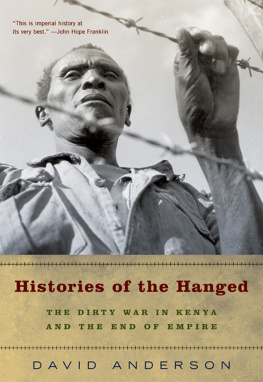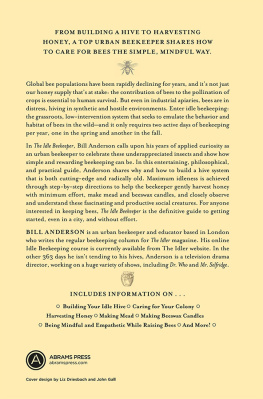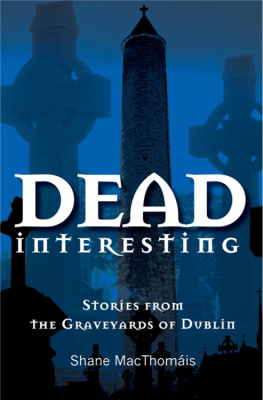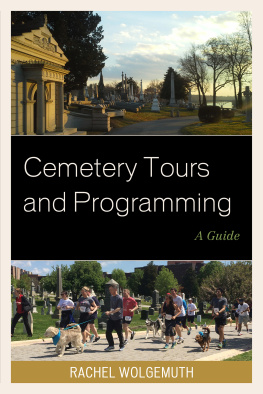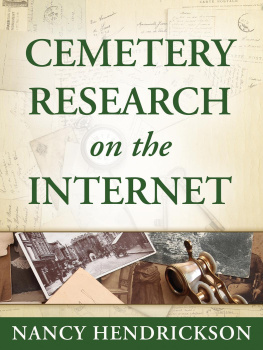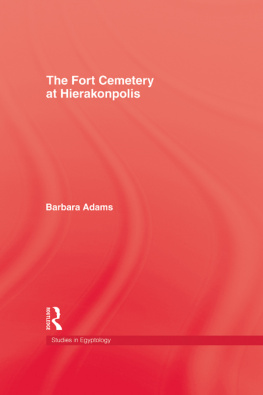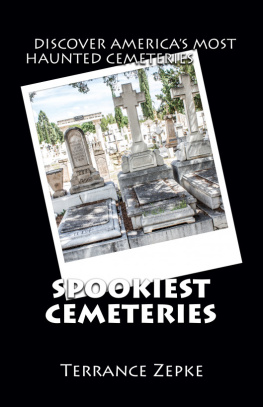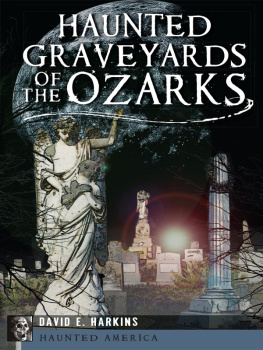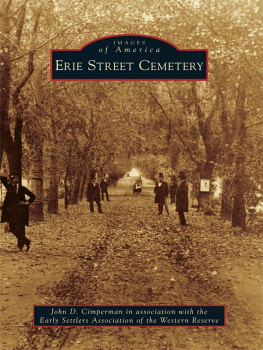
IMAGES
of America
CEMETERIES OF
YAVAPAI COUNTY

This historical marker now graces the entrance to Citizens Cemetery in Prescott. It is one of a number of similar markers erected at historic sites by the citys Historic Preservation Department.
ON THE COVER: Citizens Cemetery in Prescott, Arizona, is pictured in 1963. At that time, the cemetery was in a state of neglect and disrepair that lasted into the 1990s. (Courtesy of Sharlot Hall Museum.)
IMAGES
of America
CEMETERIES OF
YAVAPAI COUNTY
Parker Anderson

Copyright 2013 by Parker Anderson
ISBN 978-1-4671-3038-7
Ebook ISBN 9781439644102
Published by Arcadia Publishing
Charleston, South Carolina
Library of Congress Control Number: 2013932918
For all general information, please contact Arcadia Publishing:
Telephone 843-853-2070
Fax 843-853-0044
E-mail
For customer service and orders:
Toll-Free 1-888-313-2665
Visit us on the Internet at www.arcadiapublishing.com
To the men and women who maintain and care for cemeteries, who recognize that they are not only reverent burial places for our loved ones, but also major historical and cultural sites
CONTENTS
ACKNOWLEDGMENTS
A book such as this is never accomplished without the help and input of many people. In particular, I wish to thank Pat Atchison, founder of Yavapai Cemetery Association, and her daughter Ann Waterhouse; Julie Holst, Bob Bakken, and the Board of Directors of Yavapai Cemetery Association; Colleen Holt of Jerome Historical Society; Cindy Emmett and Jerry Wombacher of Clarkdale Historical Society; Julie Simon, steward of the Congress Cemeteries; Shirley Ballew, steward of Skull Valley Cemetery; and Neal Du Shane of Arizona Pioneer Cemetery Research Project (www.apcrp.org). A special thank-you to my friend Jody Drake for supporting all my endeavors. Except where otherwise noted, all photographs are by fellow taphophile David Schmittinger.
INTRODUCTION
The Territory of Arizona was created from part of the land that was ceded from Mexico to the United States at the close of the Mexican War of 18461848. For years, what is now Arizona laid quiet and dormant, inhabited mostly by Apache Indians and a few scattered miners.
In 1863, thanks to lobbying by men such as Charles Debrille Poston and others, the Organic Act of 1863 was passed by Congress and signed by Pres. Abraham Lincoln on February 24, 1863, creating the official Territory of Arizona. Pressure to create the Territory was compounded by Confederate attempts to claim the land during the Civil War.
The first governors party arrived in the Territory to set up the capital and the first Territorial government. They settled along the banks of Granite Creek and named the new village Prescott in honor of the famed Boston-based historian William Hickling Prescott, who had written extensively on South America and Mexico. In the first governors party were Gov. John N. Goodwin, secretary Richard C. McCormick, Henry W. Fleury (who would hold several different offices), and others.
The first Territorial legislature divided Arizona up into four counties, with Yavapai County (named for the Indian tribe) being the largest, reaching to the Utah border to the north. Eventually, the counties of Coconino, Apache, Navajo, and Maricopa broke off from Yavapai County, partly due to Arizona citizens who were increasingly frustrated at having to travel so far to Prescott whenever they had business in the county seat or were called for jury duty. The final borders of Yavapai County were drawn in 1891, as they remain today.
Arizona grew rapidly with mining. In territories such as this, many tales can be told from the early-day cemeteries. Burial grounds were a needed commodity as people began to die in the new territory. All told, there are over 150 cemeteries in Yavapai County alone.
This book does not endeavor to cover all of these burial grounds. Rather, it is our wish to tell the stories of Yavapai County citizens through the most interesting and historical cemeteries. Most were traditionally located on the outskirts of town although, in cases such as Prescott itself, the towns eventually grew around the cemeteries.
With a few exceptions, these cemeteries follow the Christian tradition of having the dead buried facing east, in compliance with Christian teaching that Christ will return from the east, and those buried in Christ should be facing him in the Resurrection. This tradition has become less common in recent years, with Christian beliefs having evolved to teaching that the soul is dispatched to heaven or hell upon dying, rather than on the forthcoming day of Christs return.
Unlike many areas of the nation, the oldest cemeteries in Arizona are surprisingly nonsectarian, with very few genuine church cemeteries in the early days. Catholics, Protestants, and Jews were usually buried together in the same graveyard. There was limited racial segregation in some, but not all, pioneer cemeteries.
The cemeteries of Yavapai County are the place to start when the researcher begins looking into Arizona burial grounds, for Yavapai County is truly where Arizona began.
One
CITIZENS CEMETERY
Citizens Cemetery was established on 6.5 acres of land in 1864, the same year Prescott became the Territorial capital of Arizona. At that time, the cemetery was considered to be far from downtown Prescott. The first recorded burial here was that of Joel Woods, a state legislator from Colorado who was probably visiting the new territory. In those days, people were often buried in the area where they passed away. His grave is unmarked.
This is the oldest official cemetery in all of Arizona, and any research of Arizona burial grounds must begin here. While over 3,000 graves are believed to be within its walls, there are reliable records or tombstones for only about 1,000 of them. Its residents include the rich and the poor, the famous and the infamous, and the forgotten. Large areas of vacant land hide many unmarked graves. Citizens Cemetery was purchased by Yavapai County from private owners in 1884. Burials stopped in 1933 when it was determined the grounds were full.
After that, Citizens Cemetery fell into many years of neglect, overgrown with weeds and seriously damaged by vandals. In March 1996, Pat Atchison formed the Yavapai Cemetery Association, and she, along with her husband John and a group of dedicated volunteers, worked tirelessly to clean up and restore the cemetery and document graves and help those who are seeking to locate ancestors who are buried in Citizens Cemetery.
Today, Citizens Cemetery is a fine, well-cared for burial ground for the many Arizona pioneers who are buried here. The Yavapai Cemetery Association continues its work here to this day and may be contacted at .

This is Citizens Cemetery in the 1930s. By this time, large open areas obscured the existence of unmarked graves. It was not long after this that burials in the cemetery were discontinued. (Courtesy of Sharlot Hall Museum.)
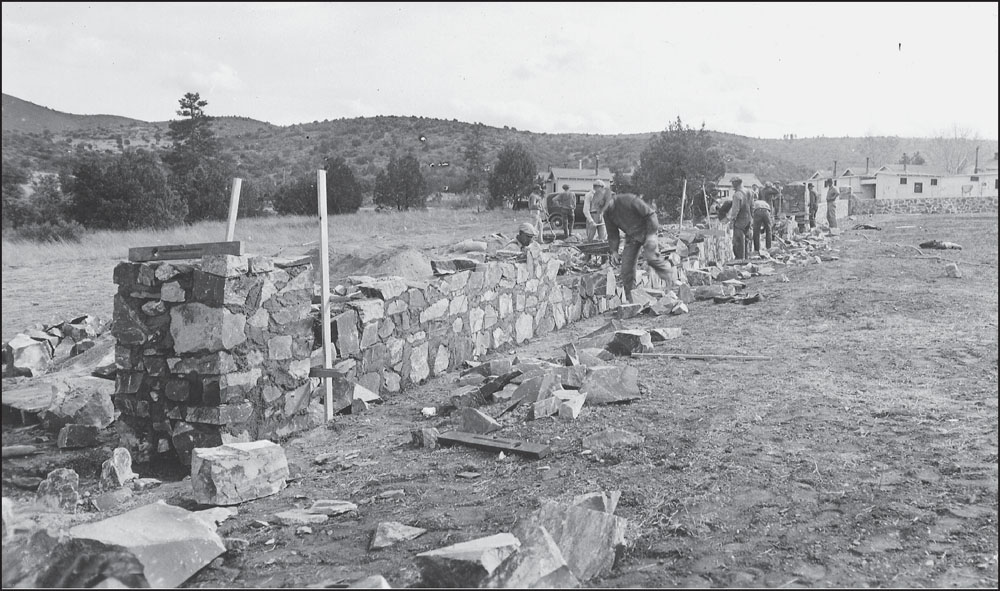
Next page





